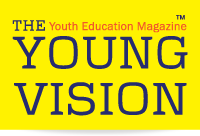
Knight Frank’s Hub Report, the second in the series, tracks the evolution of Dubai as a global hub city.
The report focuses on benchmarking Dubai against the seven other key global cities of New York, London, Paris, Singapore, Hong Kong, Shanghai and Sydney across the six key sectors of manufacturing & logistics, business & financial services, tourism, education and healthcare.
This week’s release looks at the development of one of the most important sectors in Dubai –Education.
The Dubai education sector has undergone a phenomenal transformation, due to the determined support from the KHDA to crystallise the UAE 2021 Vision. Testimony to this  ongoing success is the quality of Dubai’s primary education, which has a score of 5.4out of the top seven countries ranked by World Economic Forum.
ongoing success is the quality of Dubai’s primary education, which has a score of 5.4out of the top seven countries ranked by World Economic Forum.
Expat families are relocating to the emirate as they have ample choice for education facilities that offer a curriculum that suits their children’s needs, transforming Dubai from a place previously considered by expats as a destination where they could ‘earn a living’, to now calling Dubai their ‘home’.
Key Findings:
- Private sector in Dubai has played an increasing role in the education space by contributing 185 schools out of a total of 260 schools and enrolling 90% of the student population, which stands at approximately 300,000 students.
- The last 5 academic years ending 2016/17 witnessed:
o private sector student population increasing by 22% compared to a 5.0% growth in the public sector student population
o an average of 7 new schools per annum with academic year 2016/17 seeing an addition of 15 new schools
- A total of 16 curricula’s are on offer in Dubai with UK, Indian and US being the most favoured as they enrol 80.5% of the student population
The private education sector generated tuition revenue to the tune of AED 6.8bn and employees in excess of 17,000 teachers and 8,000 non-academic staff. For new entrants or existing schools looking to expand, the key to success is to understand catchment areas before finalising their school offering. A thorough analysis of the catchment area will help in setting the right tuition fee, positioning, curricula and facilities which will fit the requirement of the catchment population and will reduce the risk of low seat utilisation.
Shehzad Jamal, Partner Development Consulting: Education, commented, “There is talk that Dubai’s education sector is now saturated with the addition of 30 new schools in the last 5 academic years. However, with the continuous expansion of Dubai and population estimated to reach 5.2 million people by 2030, as per some government estimates, the sector still has strong growth potential with an additional 8 to 10 schools per annum over the next 5 years required to service this growth.”
[pdf]https://theyoungvision.com/wp-content/uploads/2018/04/KnightFrank-Hub-Report-2018-Education.pdf[/pdf]
